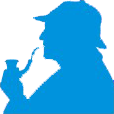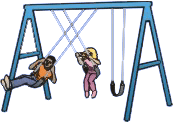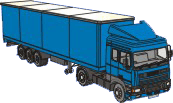Hazard Perception Lesson
What is a hazard?
A hazard may be defined as anything that may require you to change speed, position or direction of your vehicle. Basically hazards can be caused by static road features (e.g. junctions, bends, humps, dips, passing places, traffic lights, bridges, crossings, road works, parked vehicles, wet leaves, spilt oil, ice, snow, surface water etc) or by the actions of other road users or a combination of the two.
Although static road features can present a hazard the routine for dealing with them and the type of hazard they present is covered elsewhere in the Learner Driving programme . In this part of the programme we will be concentrating on those hazards that develop through the actions of other road users and those circumstances that can contribute to their hazardous behaviour.
 Hazard Perception; a bit of detection work!
Hazard Perception; a bit of detection work!
Perception in driving terms can be defined as: ‘The art of being able to pick out the important details to enable you to anticipate what’s likely to happen next from all the information provided by your senses.’ A perceptive driver must look for clues and build up a mental picture of what they think may happen next.
While hazard perception skills can only truly be acquired through experience (preferable under the guidance of an appropriately qualified driving instructor) you can speed up the learning process by having a better understanding of the factors that an expert driver considers when building up this mental picture of what’s likely to happen next. These are the main factors that an expert driver would consider:
 Road Signs
Road Signs
Road signs can provide you with a clear warning of what lies ahead. It is essential that you train yourself to take note of all road signs and act accordingly.
Your Location
Are you in a busy town centre or on a country road? It would be unlikely that you would meet a flock of sheep in the High Street, but there may be one just around the next corner on a country road. Whatever your location you must always consider the type of hazard that you may expect to meet there, and be driving at such a speed that you can stop safely, if necessary.
 The Time of Day
The Time of Day
The time of day can give you a lot of information about what to expect on the road. If you see a warning sign for cattle, or mud on the road you should be especially vigilant at dawn or dusk because cows are often taken for milking at these times and may well be on the road ahead ... perhaps around the next bend.
Although children can be present in the road at any time, they are out in force just before and after school. Therefore, you should be keeping a special look out for children during the morning rush hour and mid-afternoon periods.
Other Road Users
It may seem fairly obvious that you should look out for other road users, but remember, you are not just looking for them, you are looking for clues about what they will do next?
Pedestrians: The Highway Code explains that those pedestrians most at risk on the road are over 60 and less than 15. Old people do not judge speed and distance very well and their reactions can be slow. Have they seen you? Can they hear you? Look for clues. Are they carrying a white stick? Are they looking your way? And so on.
 Children have little time to consider road safety; they are more interested in the game that they are playing or the ice cream van that they are running after. Look for clues. Are they alone? If one child runs or cycles into the road there will often be at least one more following; footballs are followed by children; cycles, seemingly abandoned at the side of the road, will mean that children are not far away.
Children have little time to consider road safety; they are more interested in the game that they are playing or the ice cream van that they are running after. Look for clues. Are they alone? If one child runs or cycles into the road there will often be at least one more following; footballs are followed by children; cycles, seemingly abandoned at the side of the road, will mean that children are not far away.
All pedestrians, not just the young and old, are at risk on the road. If there are pedestrians about, make sure that you know what they are going to do before they do it.

 Animals:Noise and vehicles frighten animals. Therefore, drive slowly, don’t sound your horn or rev up the engine and keep you distance. Watch their behaviour carefully, particularly if it is a horse being ridden by a child.
Animals:Noise and vehicles frighten animals. Therefore, drive slowly, don’t sound your horn or rev up the engine and keep you distance. Watch their behaviour carefully, particularly if it is a horse being ridden by a child.
 Cyclists: A High Court judge once ruled that a cyclist is entitled to wobble. Drivers should have more control over their vehicles than cyclists who are dependent upon physical strength and effort to pilot their machines. Always leave plenty of room when passing cyclists, look out for clues about their next move. For example, a cyclist who looks around over his or her right shoulder may be about to turn right; a puddle in the road will cause a cyclist to move out. Cyclists are not easy to see and they can easily get lost in the blind spots around your vehicle. Particularly out watch for then in slow moving traffic in built up areas – they may overtake you on either side when you least expect.
Cyclists: A High Court judge once ruled that a cyclist is entitled to wobble. Drivers should have more control over their vehicles than cyclists who are dependent upon physical strength and effort to pilot their machines. Always leave plenty of room when passing cyclists, look out for clues about their next move. For example, a cyclist who looks around over his or her right shoulder may be about to turn right; a puddle in the road will cause a cyclist to move out. Cyclists are not easy to see and they can easily get lost in the blind spots around your vehicle. Particularly out watch for then in slow moving traffic in built up areas – they may overtake you on either side when you least expect.
Motorcyclists: Like cyclists motorcyclists are not easy to see particularly at dusk and at night. Like cyclists they may also take up unusual road positions to avoid holes and bumps in the road surface. It is very easy to miss an approaching motorcyclist when emerging at junctions – so remember think once, think twice, think bike!
 Drivers: If you are unsure about what a driver is going to do next, leave plenty of space between you and them. A sporty looking “custom-car” may be driven by someone more interested in “posing” than driving.
Drivers: If you are unsure about what a driver is going to do next, leave plenty of space between you and them. A sporty looking “custom-car” may be driven by someone more interested in “posing” than driving.
Look out for the actions of drivers: a driver who has just stopped may open his door without checking to see if it is safe; a driver who seems to be dithering about may be a stranger to the area and could, therefore, make a last minute turn without a signal when he sees the road that he is looking for.
 Large vehicles: Buses and large vehicles need more room and may take up unusual road positions to turn round corners at junctions etc. Hold back and give them plenty of room.
Large vehicles: Buses and large vehicles need more room and may take up unusual road positions to turn round corners at junctions etc. Hold back and give them plenty of room.
Inconsistent behaviour
Inconsistent behaviour is often a very good clue to what might happen next. Just because a bus is signalling left prior to the side road that you intend to emerge from doesn’t mean that you should go on the assumption that the bus is turning left? Look to see if all the actions of the driver are consistent with the signal. Is the vehicle slowing down as you would expect to complete the proposed turn? Is the position of the vehicle consistent with the proposed manoeuvre? Is the driver looking in the direction they intend to turn? Could the driver being signalling left for any other reason? In this example the bus driver may be signalling left to pull up at a bus stop just after the side road. Make sure you look at all the evidence before you finally decide.
Lets consider another example. If you were driving behind a vehicle that was indicating to turn left but the road on the left had a no entry sign at its entrance it is quite probable that the driver will do an emergency stop or swerve away at the last minute once he or she realises the mistake. Therefore anything that would potentially prevent the driver from completing the proposed manoeuvre safely would make the proposed action inconsistent.
Train your mind to recognise inconsistency – that’s not quite right – why’s that?
What other drivers cannot see
Consider what you can see that other drivers cannot see. This may play an important part in determining what may happen next. As well as determining whether the drivers behaviour is consistent with the manoeuvre they propose to complete also consider whether you can see something or someone that they cannot see that may cause them to alter their course or abort the manoeuvre at the last minute. Also consider whether other drivers need to see you and if so determine what you can do to make your presence know to them.
The weather and visibility
Bright sunlight, fog, rain and snow can severely affect visibility therefore remember to slow down and give yourself more space. At dusk and at night the driver loses the ability to see any detail and dark objects easily merge into the background. Consider not only how this may effect your judgement but also how these conditions may affect other drivers. Is the other driver being blinded by bright sunlight or if at night by headlights on full beam? Are the windows of other vehicles misty - can the driver see you? Will the high-sided vehicle, in high wind, remain stable when it crosses a gap in the hedge or buildings that might line the side of the road? Also remember the effects of water, ice and snow on the road surface – are the other drivers driving too fast for the weather conditions – are you driving too fast for these conditions?